Flash Memory Summit, Toshiba Keynote Live Blog
by Ian Cutress & Billy Tallis on August 7, 2018 2:37 PM EST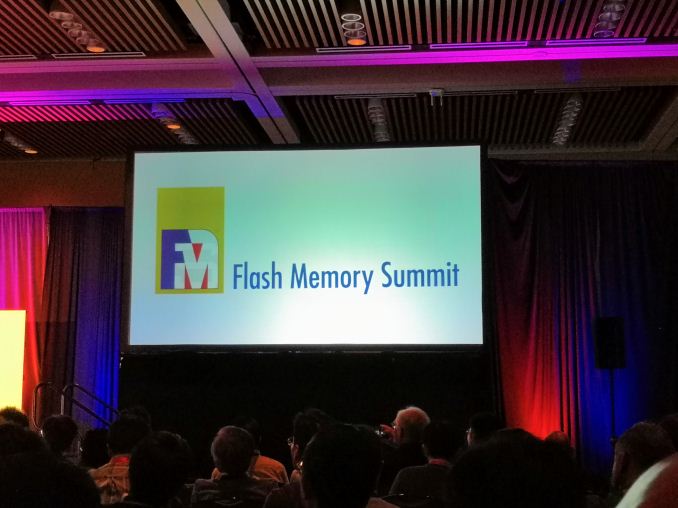
02:42PM EDT - We're here at Flash Memory Summit! One of the first keynotes of the event is Toshiba, speaking about their use of Flash.
02:43PM EDT - Going to start in a few minutes
02:43PM EDT - But to give you a scale of Flash Memory Summit, there are around 1000+ people in the keynote hall right now
02:44PM EDT - A mix of a few press, flash vendors, and a lot of people involved in development of flash systems and deployment
02:46PM EDT - OK here we go
02:46PM EDT - Scaling Flash Technology to Meet Application Demands, presented by Jeff Ohshima, Tech Exec of SSD Application Engineering at Toshiba
02:47PM EDT - Talk about the newest flash, and flash native solutions
02:48PM EDT - Generated CAGR +27%, reaching 160 ZB by 2025
02:48PM EDT - Data is being mostly stored in enterprise
02:49PM EDT - Flash is growing in % storage bytes, almost same exabytes as HDD in 2025
02:49PM EDT - Big Data volume also expected to grow massively by 2021
02:49PM EDT - Very strong flash demand
02:49PM EDT - Big storage demands in Big Data and IoT especially, lots of growth
02:50PM EDT - Toshiba is number 1 in SAS, number 2 in SSD
02:50PM EDT - Constantly growing market share
02:51PM EDT - Toshiba invested NAND flash, so has lots of knowledge
02:51PM EDT - World's largest facility for flash memory
02:51PM EDT - short video of the fab
02:52PM EDT - 96-layer BiCS Flasg
02:53PM EDT - Cold data and hot data
02:53PM EDT - Hot data is 10%, typucally for real time
02:53PM EDT - Cold data used for analytical
02:54PM EDT - Quickly grow to exabytes
02:54PM EDT - Quickly grow to exabytes
02:54PM EDT - or creating models for AI and machine learning
02:55PM EDT - Data is usually time series measurement data, which goes into high speed hot storage. Sometimes statistical values are extracted at this level
02:56PM EDT - data then moves into a Big Data environment for AI/ML
02:56PM EDT - Also positive feedback for model learning
02:56PM EDT - Hot data can also be used for process control and inference for real-time equipment control
02:57PM EDT - Changes from 2D storage 3D, the number of process steps has become 2x
02:57PM EDT - Total number of process parameters is 6x
02:58PM EDT - Using past experiences to learn for future development
02:58PM EDT - Analysis has become extremely complicated
02:58PM EDT - 'We make it, we use it - it's the perfect ecosystem for flash'
02:59PM EDT - TLC has become mainstream, 64-layer BiCS3
02:59PM EDT - Now on BiCS Gen 4, 96-layer
02:59PM EDT - Use QLC, and XL-Flash for Low Latency
03:00PM EDT - XL-Flash ahs very high speed random access latency
03:00PM EDT - XL-Flash sounds like their competitor to Samsung's Z-NAND
03:00PM EDT - July 24th, held a groundbreaking ceremony called K1 in Kitakami
03:01PM EDT - 3D production of Gen 4 fully
03:01PM EDT - BiCS4 QLC production starts next year
03:01PM EDT - 20TB in an M.2 22110
03:01PM EDT - or 85TB in a U.2
03:01PM EDT - 1.33 Tb QLC chips
03:02PM EDT - Good cycling up to 1500 P/E cycles
03:02PM EDT - Good opportunity with TLC portfolio
03:02PM EDT - XL-Flash has 1/10th the read latency of TLC
03:02PM EDT - XL-Flash is high-speed low-latency random read BICS
03:02PM EDT - 1/10 read latency of TLC
03:03PM EDT - Good for random IPOS and better QoS at shallow QD in an SSD
03:03PM EDT - QD = Queue Depth
03:03PM EDT - New architecture
03:03PM EDT - 'XL-Flash is just a Flash, no additional process required'
03:03PM EDT - Circuit design innovation for a memory array
03:04PM EDT - shorter bit lines and bit lines
03:04PM EDT - allowing more planes
03:04PM EDT - 2 planes vs many planes
03:04PM EDT - IO is now diverging in requirements for storage
03:04PM EDT - Need to respond to market workloads
03:05PM EDT - High speed vs high-throughput
03:05PM EDT - Latency vs locality
03:05PM EDT - XL-FLASH used with QLC in a combo
03:05PM EDT - 'Flash Native' storage
03:06PM EDT - Using BiCS in multiple stages
03:06PM EDT - Use XL-Flash in place of in-DRAM data ?!
03:07PM EDT - Performance confirmed by simulation
03:07PM EDT - Meeting IO Requirements of customer use cases
03:08PM EDT - XL-Flash + QLC has lower latency than DRAM + HDD
03:08PM EDT - XL-flash can provide a larger slower cache than DRAM, with a better cache hit rate
03:09PM EDT - network attached storage and NVMe over fabric
03:09PM EDT - lots of servers are idle
03:09PM EDT - Lots of IOPS left on the table
03:09PM EDT - Pooled storage with NVMe-oF allows for dynamic provisioning
03:10PM EDT - Super fast block storage, both disaggregated and abstracted
03:10PM EDT - Bringing the solution in terms of software
03:10PM EDT - Using KUMOSCALE
03:10PM EDT - Supports mature orchestration fameworks
03:10PM EDT - Kubernetes, XClarity, OpenStack
03:11PM EDT - Also NVMe-OF Ethernet Attached SSD
03:11PM EDT - ethernet JBOF
03:12PM EDT - New architectures of JBOF using bridge SoC by Marvell
03:13PM EDT - PCIe has internal bottlenecks on normal systems, up to 100 Gbps to 200 Gbps
03:13PM EDT - Aiming to provide total solution, 600 Gbps+
03:13PM EDT - Benefit wide range of customers
03:14PM EDT - 8K/3D visualization uses random data reads
03:14PM EDT - Solution can cover a lot of requirements
03:15PM EDT - HMD requires response to fast head movement - Toshiba has demo system for 8K HMD data
03:15PM EDT - 'Life After SATA'
03:15PM EDT - SATA Roadmap is ending soon
03:16PM EDT - NVMe and value SAS is similar price to SATA
03:16PM EDT - New drives RM5 and CD5 target life after SATA
03:16PM EDT - Quick migration from BICS3 to BiCS4
03:17PM EDT - Sale of Toshiba memory completed, merger is complete
03:18PM EDT - TMC is ready to replace SATA
03:18PM EDT - That's a wrap


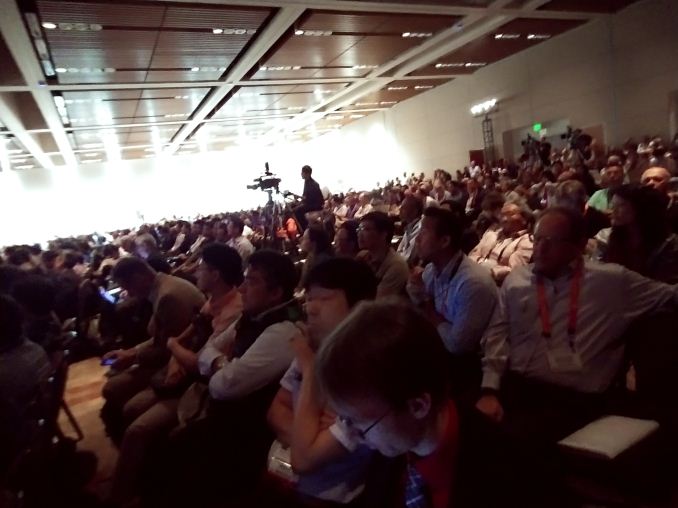



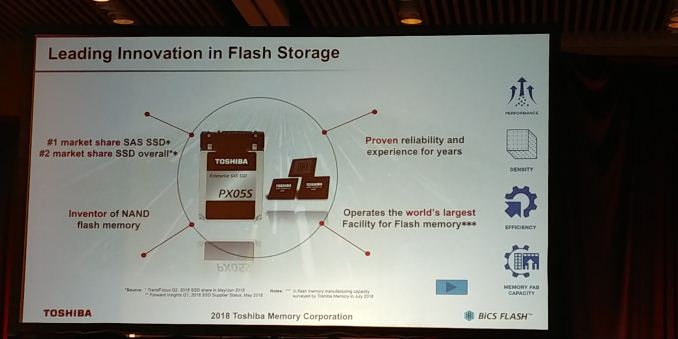
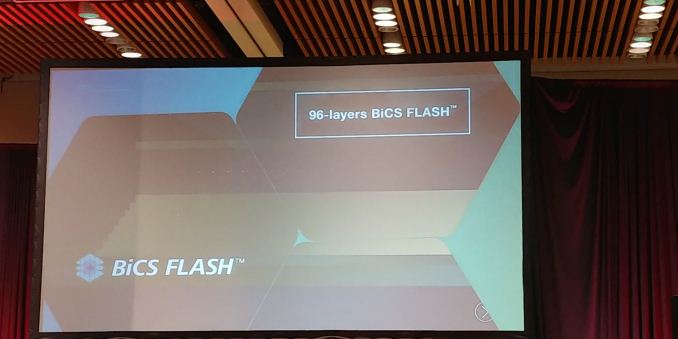
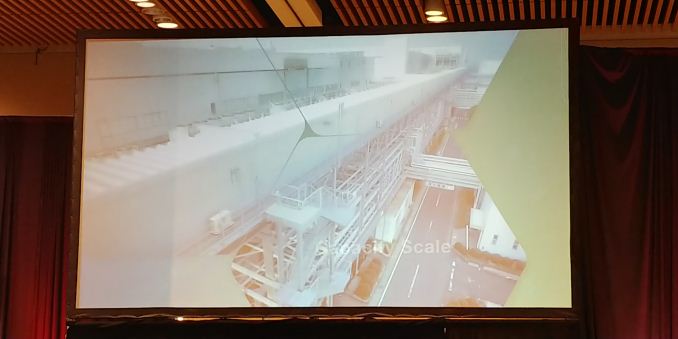
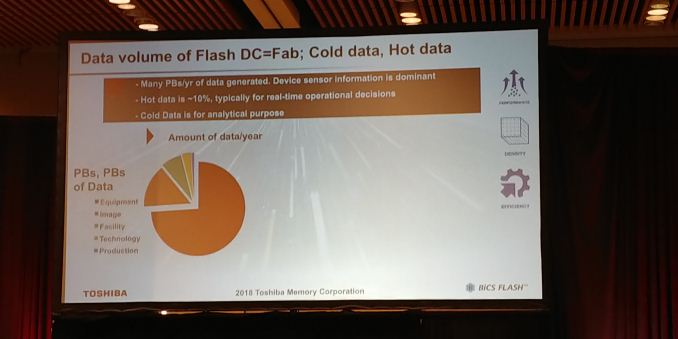
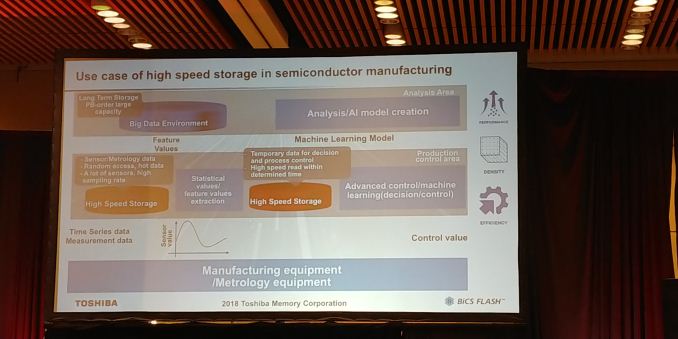
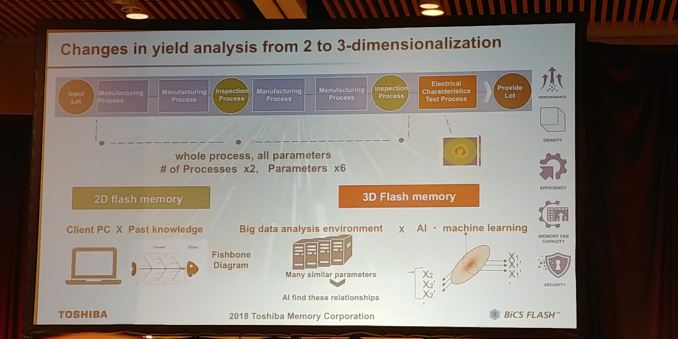
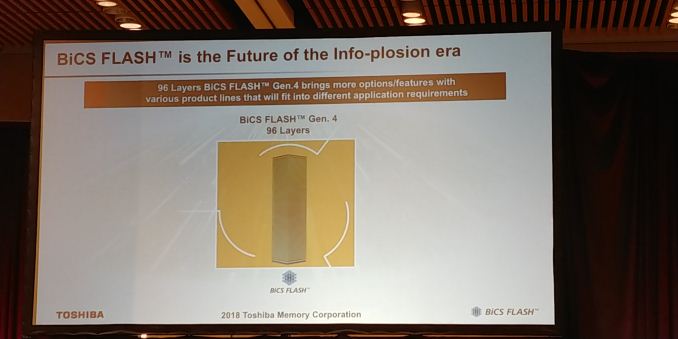
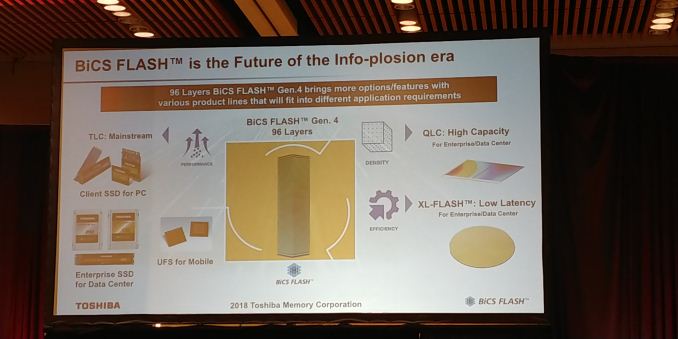
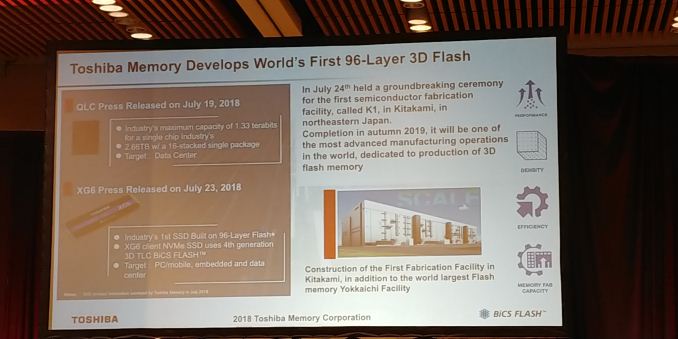
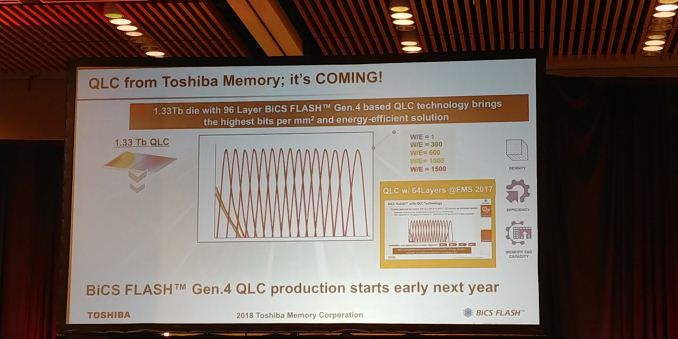
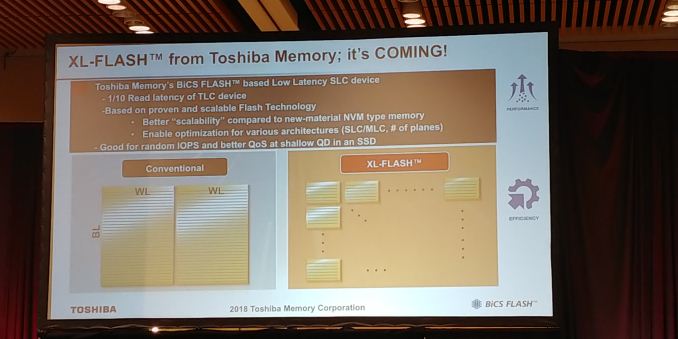
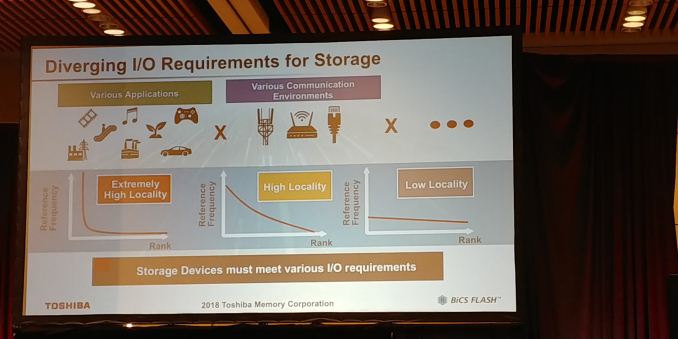
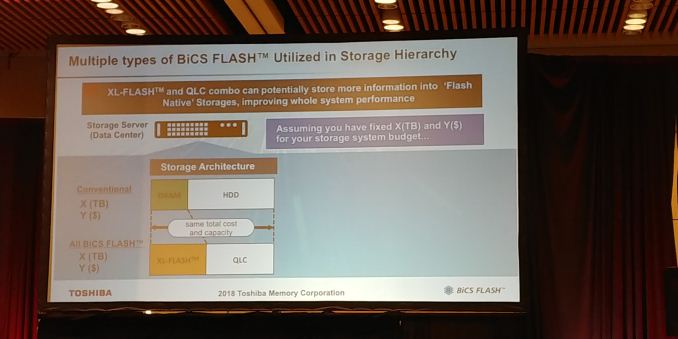
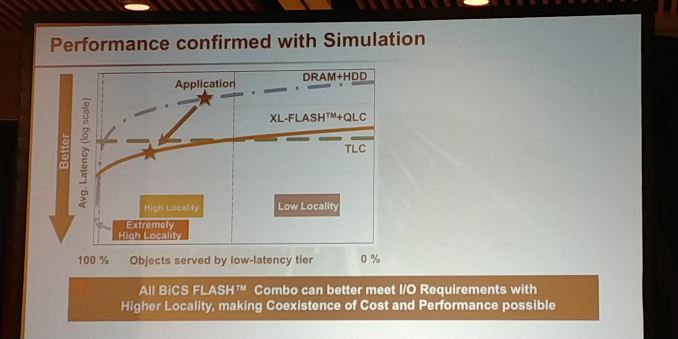
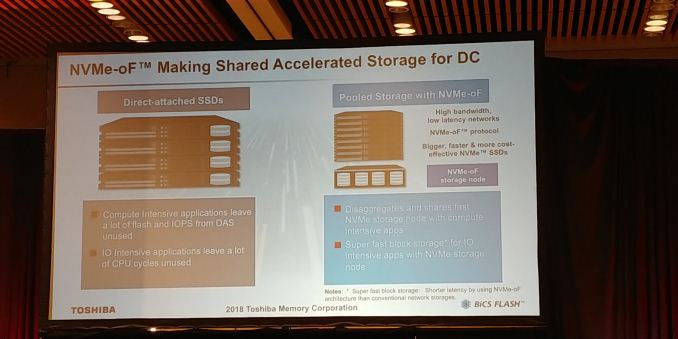

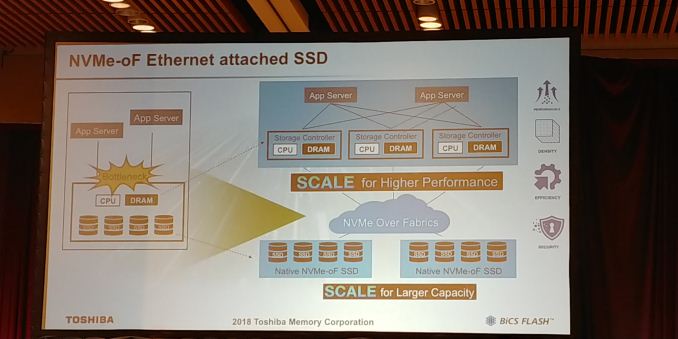
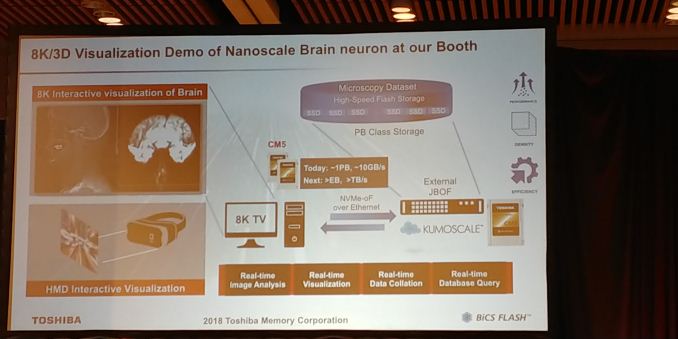
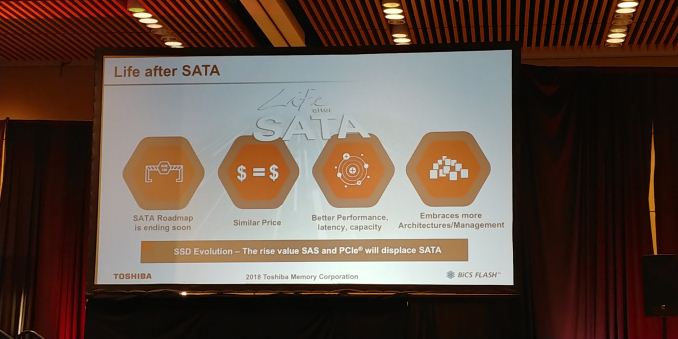
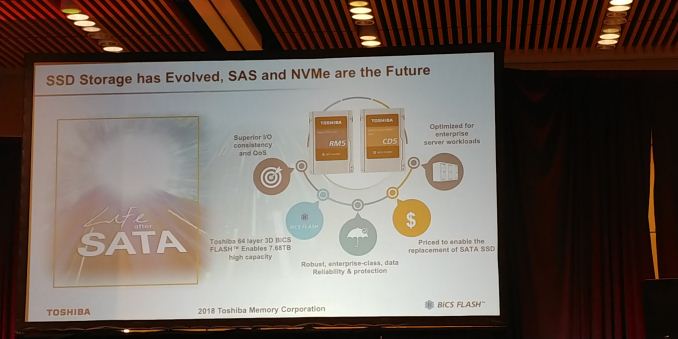
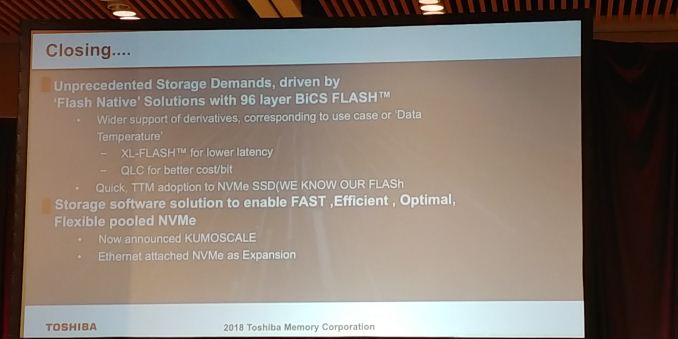








1 Comments
View All Comments
bestcustomflashdrives - Thursday, March 14, 2019 - link
Nice information on flash memory summit. Keep sharing it.